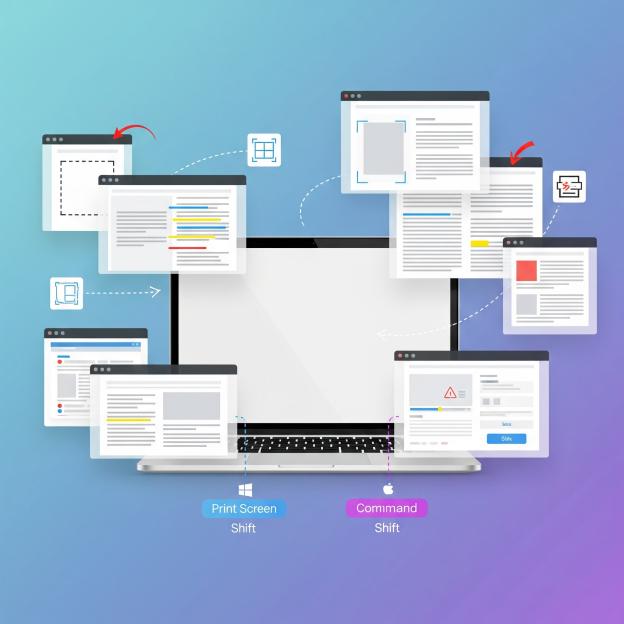That perfect sunset shot you captured last weekend isn’t just another memory on your phone â it could be your next paycheck. In today’s digital world, your smartphone snaps and DSLR masterpieces aren’t just memories gathering digital dust; they’re potential goldmines waiting to be discovered by buyers across the globe.
Whether you’re a weekend warrior with an eye for the extraordinary or a seasoned photographer looking to monetize your extensive portfolio, the online photography marketplace has exploded into a billion-dollar industry where your creativity meets real cash opportunities.
Table of Contents
- Why Sell Photos Online?
- Types of Photo-Selling Platforms
- Top Stock Photography Websites
- Print-on-Demand Platforms
- Direct Sales Platforms
- Mobile Photography Apps
- How to Choose the Right Platform
- Maximizing Your Photo Sales
- Legal Considerations
- Getting Started: Step-by-Step Guide
Why Sell Photos Online in 2025?
The digital photography market has transformed dramatically over the past few years. With businesses spending over $4.2 billion annually on stock photography and visual content, there’s never been a better time to turn your photography hobby into a profitable venture.
Key Market Trends:
- Increased demand for authentic imagery: Brands are moving away from overly polished stock photos
- Mobile photography acceptance: High-quality smartphone photos are now widely accepted
- Niche market opportunities: Specialized subjects command higher prices
- Global accessibility: Reach buyers worldwide from your home studio
Income Potential:
- Beginner photographers: $50-$500 per month
- Intermediate photographers: $500-$2,000 per month
- Professional photographers: $2,000-$10,000+ per month
- Top earners: $50,000+ annually from photo sales alone
Types of Photo-Selling Platforms
Understanding different platform types helps you choose the best fit for your photography style and business goals.
Stock Photography Sites
Traditional platforms where buyers purchase licenses to use your photos for commercial or editorial purposes.
Best For: High-quality, commercial-ready images Typical Earnings: $0.25 â $120 per download Volume Required: High (hundreds to thousands of photos)
Print-on-Demand Platforms
Services that print your photos on various products (canvas, mugs, t-shirts) when customers order.
Best For: Artistic and decorative photography Typical Earnings: 10-20% royalty per sale Volume Required: Medium (50-200 quality images)
Direct Sales Platforms
Websites where you sell directly to consumers, often as digital downloads or prints.
Best For: Professional photographers with established brands Typical Earnings: 70-95% of sale price Volume Required: Low to medium (quality over quantity)
Mobile Apps
Smartphone-focused platforms for selling photos taken with mobile devices.
Best For: Casual photographers and mobile enthusiasts Typical Earnings: $5-$50 per photo Volume Required: Low (individual high-quality shots)
Top Stock Photography Websites
1. Shutterstock
Commission: 15-40% (based on lifetime earnings) Best For: Professional photographers with large portfolios Pros: Highest traffic, global reach, excellent search optimization Cons: High competition, strict quality standards
Shutterstock remains the industry leader with over 750 million images in their library. Their contributor program offers escalating commission rates, starting at 15% for new contributors and reaching 40% for top performers earning over $25,000 lifetime.
Key Features:
- Advanced keywording tools
- Editorial content opportunities
- Video and illustration uploads
- Mobile app for submissions
Success Tips:
- Focus on trending topics and seasonal content
- Use all 50 available keywords per image
- Submit consistently (aim for 10+ images weekly)
- Study their most popular content for inspiration
2. Adobe Stock
Commission: 33% for photos, 35% for videos Best For: Creative professionals already using Adobe products Pros: Integration with Adobe Creative Suite, fair commission rates Cons: Smaller customer base than Shutterstock
Adobe Stock leverages the massive Adobe ecosystem, making it attractive for photographers already using Lightroom, Photoshop, or other Adobe products.
Key Features:
- Direct upload from Lightroom
- Automatic keyword suggestions
- Premium collection opportunities
- Editorial content acceptance
Getting Started:
- Create an Adobe ID
- Complete the contributor application
- Pass the sample submission review (7-10 images)
- Start uploading your best work
3. Getty Images (iStock)
Commission: 15-45% (exclusive contributors earn more) Best For: High-quality, unique photography Pros: Premium pricing, prestigious brand association Cons: Extremely selective, difficult approval process
Getty Images operates two main platforms: the premium Getty Images collection and the more accessible iStock platform.
Exclusivity Benefits:
- Higher commission rates (up to 45%)
- Premium pricing opportunities
- Featured placement in searches
- Marketing support from Getty
4. Alamy
Commission: 50% for non-exclusive, 60% for exclusive Best For: Photographers wanting higher commission rates Pros: Highest standard commission rates, accepts phone photos Cons: Lower traffic than major competitors
Alamy stands out for offering the highest commission rates in the industry and accepting smartphone photography alongside professional camera work.
Unique Features:
- Live News section for timely content
- Accepts older, lower-resolution images
- No caps on keywords or uploads
- Detailed sales analytics
5. Depositphotos
Commission: 34-42% based on exclusivity level Best For: International photographers Pros: Growing platform, competitive rates, good for beginners Cons: Smaller market presence in the US
This Ukraine-based platform has been gaining traction globally and offers competitive commission rates for new contributors.
Print-on-Demand Platforms
6. Fine Art America
Commission: 10-30% markup you set Best For: Artistic photography and fine art Pros: Complete control over pricing, high-quality printing Cons: Requires marketing effort to drive sales
Fine Art America allows you to sell your photography as prints, canvas, metal prints, and various products with your chosen markup.
Product Options:
- Fine art prints
- Canvas and framed prints
- Home decor items
- Apparel and accessories
- Phone cases and tech accessories
7. Society6
Commission: 10% for art prints, varies for other products Best For: Trendy, artistic photography Pros: Handles all production and shipping, trendy audience Cons: Lower commission rates, high competition
Society6 focuses on unique, artistic designs and has built a community around creative expression.
Popular Categories:
- Nature and landscape photography
- Urban and street photography
- Abstract and artistic compositions
- Minimalist designs
8. Redbubble
Commission: 10-30% (you set the margin) Best For: Creative, unique photography Pros: Wide product range, global shipping Cons: Saturated market, marketing challenges
Redbubble offers one of the widest ranges of products for your photography, from stickers to wall tapestries.
Direct Sales Platforms
9. SmugMug
Cost: $5-$40 monthly subscription Best For: Professional photographers with established clientele Pros: Professional galleries, e-commerce tools, unlimited storage Cons: Monthly fees, requires existing customer base
SmugMug provides professional gallery websites with built-in e-commerce functionality, perfect for photographers wanting to sell directly to clients.
10. Zenfolio
Cost: $7-$30 monthly subscription Best For: Wedding and portrait photographers Pros: Client proofing tools, integrated shopping cart Cons: Monthly costs, learning curve
Zenfolio specializes in professional photography services with robust client management and sales tools.
11. Format
Cost: $8-$24 monthly subscription Best For: Creative professionals wanting stylish portfolios Pros: Beautiful templates, integrated e-commerce Cons: Limited customization, monthly fees
Format combines portfolio presentation with sales capabilities, making it ideal for photographers who want beautiful websites.
Mobile Photography Apps
12. Foap
Payout: $5 per photo sold Best For: Mobile photographers and casual shooters Pros: Simple process, missions with guaranteed payouts Cons: Low per-photo earnings, high competition
Foap revolutionized mobile photography sales by creating a platform specifically for smartphone photos.
How It Works:
- Take photos with your smartphone
- Upload through the Foap app
- Add titles and tags
- Earn $5 for each photo sold
Mission Opportunities:
- Brand-sponsored photo contests
- Guaranteed payouts for selected submissions
- Themes like “Coffee Culture”; or “Urban Lifestyle”;
13. Snapwire
Payout: $5-$200 per photo Best For: Mobile photographers wanting higher payouts Pros: Higher earning potential, brand challenges Cons: Competitive selection process
Snapwire connects mobile photographers with brands looking for authentic, user-generated content.
14. Twenty20
Payout: $1-$100 per photo Best For: Social media-style photography Pros: Quick approval process, social media integration Cons: Variable pricing, platform changes
Twenty20 focuses on lifestyle and social media-style photography, perfect for Instagram-worthy shots.
Specialized and Niche Platforms
15. 500px
Commission: 60% on Licensing, varies on Marketplace Best For: Art photography and building photographer reputation Pros: Photography community, portfolio building Cons: Selective licensing program
500px combines a photography community with licensing opportunities, making it great for networking and sales.
16. Stocksy
Commission: 50-75% (highly selective) Best For: Premium, artistic photography Pros: Highest quality standards, excellent payouts Cons: Invitation-only membership
Stocksy operates as a artist-owned cooperative, offering some of the highest payouts in the industry for accepted photographers.
17. Picfair
Commission: 80% for free uploads, 95% for premium members Best For: Photographers wanting to keep most profits Pros: High commission rates, fair pricing Cons: Smaller customer base
Picfair allows photographers to set their own prices and keeps most of the profits.
How to Choose the Right Platform
Selecting the best platform depends on several factors specific to your photography style, goals, and current skill level.
Consider Your Photography Type
Commercial/Business Photography:
- Best platforms: Shutterstock, Adobe Stock, Getty Images
- Focus on: Clean, professional images with commercial appeal
- Keywords: Business, technology, lifestyle, professional
Artistic/Fine Art Photography:
- Best platforms: Fine Art America, Society6, 500px
- Focus on: Unique perspective, emotional impact, artistic composition
- Keywords: Art, creative, abstract, artistic expression
Mobile/Lifestyle Photography:
- Best platforms: Foap, Snapwire, Twenty20
- Focus on: Authentic moments, lifestyle content, mobile-optimized images
- Keywords: Lifestyle, authentic, mobile, everyday moments
Nature/Travel Photography:
- Best platforms: All major stock sites, specialized travel platforms
- Focus on: Landscapes, wildlife, cultural experiences
- Keywords: Travel, nature, adventure, destinations
Evaluate Your Commitment Level
Casual Sellers (1-5 hours/week):
- Recommended: Foap, Snapwire, one major stock site
- Strategy: Focus on quality over quantity
- Goal: $50-$200 monthly income
Serious Part-time (5-15 hours/week):
- Recommended: 2-3 major stock sites, one print-on-demand platform
- Strategy: Consistent uploads, keyword optimization
- Goal: $200-$1,000 monthly income
Professional/Full-time (15+ hours/week):
- Recommended: Multiple platforms across different categories
- Strategy: Diversified portfolio, trend analysis, niche specialization
- Goal: $1,000+ monthly income
Financial Considerations
No Upfront Costs:
- Free platforms: Shutterstock, Adobe Stock, Foap, Alamy
- Best for: Beginners testing the market
Monthly Investment:
- Subscription platforms: SmugMug, Zenfolio, Format
- Best for: Established photographers with existing client base
Commission vs. Control Trade-off:
- Higher commissions: Usually mean less control over pricing
- Direct sales: More control but require more marketing effort
Maximizing Your Photo Sales
Success in online photo sales requires more than just uploading images. Here’s how to optimize your approach:
Photo Quality Standards
Technical Requirements:
- Resolution: Minimum 4MP (2400Ã1600 pixels)
- File Format: JPEG for most platforms, some accept RAW
- Color Space: sRGB for web display
- Compression: High quality, minimal artifacts
Composition Excellence:
- Rule of thirds: Position key elements along grid lines
- Leading lines: Guide viewer’s eye through the image
- Negative space: Allow room for text overlay in commercial shots
- Sharp focus: Ensure critical elements are tack sharp
Commercial Viability:
- Model releases: Required for recognizable people
- Property releases: Needed for private properties/artwork
- Trademark awareness: Avoid logos and branded items
- Universal appeal: Create images that work globally
Keyword Optimization Strategy
Primary Keywords (Most Important):
- Describe exactly what’s in the photo
- Use specific nouns and adjectives
- Include both broad and specific terms
- Example: “businesswoman”; and “female executive”;
Secondary Keywords (Supporting Terms):
- Describe the mood or concept
- Include related activities or industries
- Add demographic information
- Example: “professional,”; “confident,”; “corporate”;
Long-tail Keywords (Specific Phrases):
- Target specific buyer searches
- Include action words and scenarios
- Consider seasonal relevance
- Example: “team meeting in modern office”;
LSI Keywords for Photography:
- Stock photos, royalty-free images, commercial photography
- Digital downloads, print-on-demand, visual content
- Photo licensing, image marketplace, creative assets
- Professional photography, high-resolution images
- Editorial photography, commercial use, exclusive content
Seasonal and Trending Content
Annual Planning:
- Q1: New Year themes, winter activities, Valentine’s Day
- Q2: Spring themes, Easter, Mother’s Day, graduation
- Q3: Summer activities, Father’s Day, back-to-school
- Q4: Halloween, Thanksgiving, Christmas, year-end business
Evergreen Content:
- Business and office scenarios
- Health and wellness themes
- Technology and innovation
- Food and cooking
- Home and lifestyle
Trending Topics to Watch:
- Remote work and home offices
- Sustainability and eco-friendly living
- Mental health and wellness
- Diversity and inclusion
- Authentic lifestyle moments
Portfolio Diversification
Content Categories to Include:
Business (30% of portfolio):
- Office environments and meetings
- Professional headshots and portraits
- Technology and digital devices
- Teamwork and collaboration
- Success and achievement concepts
Lifestyle (25% of portfolio):
- Family moments and relationships
- Health and fitness activities
- Food and dining experiences
- Home and interior design
- Travel and leisure activities
Nature and Landscapes (20% of portfolio):
- Scenic landscapes and cityscapes
- Weather phenomena and seasons
- Plants, flowers, and gardens
- Wildlife and pets
- Environmental and conservation themes
Abstract and Conceptual (15% of portfolio):
- Textures and patterns
- Color studies and gradients
- Geometric shapes and designs
- Light and shadow play
- Minimalist compositions
Specialized Niches (10% of portfolio):
- Medical and healthcare
- Education and learning
- Sports and recreation
- Arts and culture
- Science and research
Legal Considerations and Best Practices
Understanding the legal aspects of selling photos online protects both you and your buyers while ensuring sustainable business practices.
Copyright and Ownership
Photographer Rights:
- You retain copyright ownership of your images
- Licensing grants usage rights, not ownership transfer
- You can license the same image to multiple platforms
- Exclusive contracts may limit where you can sell
Model and Property Releases:
When Model Releases Are Required:
- Any recognizable person in commercial use photos
- Children require guardian signatures
- Groups need releases from all identifiable individuals
- Even partial faces may require releases
Property Release Situations:
- Private residences and buildings
- Recognizable artwork or sculptures
- Branded products or logos
- Private event venues
Public Space Exceptions:
- Editorial use often doesn’t require releases
- Public landmarks typically don’t need property releases
- Street photography for editorial purposes
- News and documentary photography
Platform Terms and Conditions
Key Points to Review:
- Commission rates and payment schedules
- Exclusive vs. non-exclusive licensing terms
- Content removal and moderation policies
- Geographical restrictions and tax implications
Exclusive vs. Non-Exclusive Decisions:
Exclusive Benefits:
- Higher commission rates (often 10-20% more)
- Premium placement in search results
- Marketing support from platforms
- Higher price points for buyers
Non-Exclusive Advantages:
- Sell on multiple platforms simultaneously
- Maintain full control over distribution
- Test different markets
- Reduce dependency on single platform
Tax Implications for US Photographers
Income Reporting:
- Photo sales count as self-employment income
- Keep detailed records of all earnings
- Track expenses for tax deductions
- Consider quarterly estimated tax payments
Deductible Expenses:
- Camera equipment and gear
- Computer and software costs
- Internet and phone bills (business portion)
- Travel expenses for photography
- Home office space (if applicable)
- Professional development and education
Form 1099-MISC Considerations:
- Platforms may issue 1099s for earnings over $600
- Report all income regardless of 1099 receipt
- International platforms may have different reporting
Getting Started: Step-by-Step Action Plan
Week 1: Foundation Setup
Day 1-2: Portfolio Assessment
- Review your existing photos
- Select 50-100 best images
- Organize by category and theme
- Identify gaps in your collection
Day 3-4: Platform Research
- Sign up for 2-3 platforms maximum initially
- Read terms of service thoroughly
- Understand commission structures
- Download platform apps if available
Day 5-7: Technical Preparation
- Install photo editing software (free options: GIMP, Lightroom mobile)
- Learn basic editing techniques
- Understand file format requirements
- Create organized folder structure
Week 2: Content Preparation
Image Editing and Optimization:
- Adjust exposure and contrast
- Enhance colors naturally
- Crop for optimal composition
- Resize for platform requirements
- Save in appropriate formats
Keyword Research:
- Study successful images in your niche
- Create keyword lists for each category
- Use platform suggestion tools
- Research trending topics
Model and Property Releases:
- Download release forms
- Identify which images need releases
- Contact subjects for signatures
- Organize release documentation
Week 3: Upload and Optimization
Initial Uploads:
- Start with your 20 best images
- Focus on quality over quantity
- Use all available keyword slots
- Write compelling descriptions
Platform Learning:
- Study analytics and insights
- Understand search algorithms
- Learn from successful contributors
- Join community forums
Week 4: Analysis and Scaling
Performance Review:
- Analyze which images get approved
- Study download statistics
- Identify successful categories
- Note rejection reasons
Scaling Strategy:
- Plan consistent upload schedule
- Identify content gaps to fill
- Consider adding new platforms
- Set monthly upload goals
Month 2 and Beyond: Growth Strategies
Diversification:
- Add 1-2 new platforms quarterly
- Explore different image types
- Test seasonal content
- Experiment with trending topics
Skill Development:
- Take online photography courses
- Learn advanced editing techniques
- Study market trends and demands
- Network with other photographers
Business Optimization:
- Track income and expenses
- Optimize keyword strategies
- Analyze best-performing content
- Plan content calendar
Advanced Strategies for Success
Understanding Market Demand
Research Tools:
- Google Trends for topic popularity
- Platform search suggestions
- Competitor analysis
- Social media trending topics
Buyer Behavior Analysis:
- Study download patterns
- Understand seasonal demands
- Identify niche opportunities
- Follow industry publications
Content Gap Identification:
- Search for underserved topics
- Analyze competition levels
- Find emerging trends early
- Create unique perspectives
Building Your Photography Brand
Consistent Style Development:
- Develop recognizable editing style
- Focus on specific niches or themes
- Maintain quality standards
- Create cohesive portfolio presentation
Social Media Integration:
- Share behind-the-scenes content
- Build photographer following
- Drive traffic to your portfolios
- Engage with photography community
Professional Networking:
- Join photographer associations
- Attend industry events
- Collaborate with other creatives
- Build relationships with buyers
Scaling Your Photo Business
Automation Tools:
- Use batch editing software
- Automate keyword tagging
- Schedule uploads
- Track performance metrics
Team Building:
- Hire photo editors
- Collaborate with models
- Work with location scouts
- Partner with other photographers
Diversification Strategies:
- Offer photo editing services
- Create photography courses
- Sell photo equipment
- Provide photography consulting
Common Mistakes to Avoid
Technical Mistakes
- Over-editing: Maintain natural look
- Poor keywords: Avoid irrelevant tags
- Low resolution: Meet platform minimums
- Copyright violations: Only upload your work
Business Mistakes
- Platform dependency: Diversify income sources
- Ignoring trends: Stay current with market demands
- Poor organization: Maintain systematic approach
- Inconsistent uploads: Maintain regular schedule
Legal Mistakes
- Missing releases: Always get proper documentation
- Copyright infringement: Respect others’ work
- Tax negligence: Keep proper records
- Contract ignorance: Understand platform terms
Conclusion: Your Path to Photography Profits
The world of online photo sales offers unprecedented opportunities for photographers of all skill levels to monetize their creativity. With the right combination of quality content, strategic platform selection, and consistent effort, you can build a sustainable income stream from your photography passion.
Remember that success in photo sales doesn’t happen overnight. The most successful photographers treat this as a long-term business, consistently improving their craft, staying aware of market trends, and adapting to changing platform algorithms and buyer preferences.
Start small, focus on quality over quantity, and gradually expand your presence across multiple platforms. Whether you’re earning your first $50 or scaling to $5,000 monthly, the key is persistence, learning from your results, and continuously improving your photography and business skills.
The digital marketplace is waiting for your unique perspective. Take that first step today, upload your best work, and begin your journey from passionate photographer to profitable photo entrepreneur. Your camera roll could be your next goldmine â it’s time to unlock its potential.
Take Action Today:
- Choose 2-3 platforms from this guide
- Select your 20 best photos
- Create your first account
- Upload your first image
- Start your photo-selling journey now
The photography market is growing, opportunities are expanding, and your perfect shot could be exactly what someone across the world is searching for right now. Don’t let another day pass â transform your photography passion into profit today.
Ready to start selling your photos online? Begin with one platform, upload consistently, and watch your photography passion transform into a profitable business. The digital marketplace is waiting for your unique vision.







